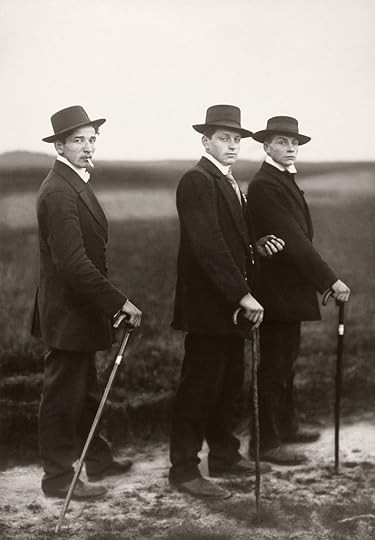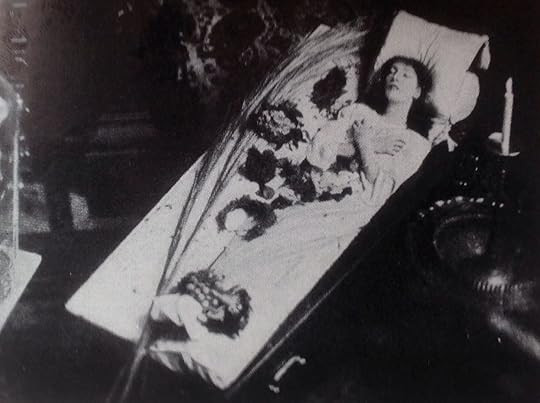August Sander’s photograph, “Three Farmers On Their Way To A Dance,” taken on May 1, 1914, is more than just a historical snapshot; it’s a lens through which Richard Powers, in his early novel “Three Farmers,” critiques and explores the essence of modernism. Powers, known for his deep engagement with European modernism, uses this image as a focal point to delve into themes of perception, interpretation, and the dawn of a new era. This article examines how Powers, through his essayistic and imaginative approach, positions “Three Farmers” within the modernist movement, revealing its enduring relevance and foreshadowing of postmodern thought.
Powers as a Late Modernist: Essayistic and Imaginative
Richard Powers himself has acknowledged a profound and lasting influence from European modernists like Proust, Mann, Joyce, Musil, and Kafka. This influence is palpable in “Three Farmers,” his debut novel. Powers masterfully blends essayistic analysis with imaginative narrative, reminiscent of Thomas Mann’s intellectual depth in “The Magic Mountain” and James Joyce’s stream-of-consciousness innovation in “Ulysses”. This fusion is evident as the narrator dissects the photograph, offering both critical perspectives and imagined scenarios surrounding the three farmers.
While some critics attempt to categorize Powers as postmodern, a closer look at his early work, particularly “Three Farmers,” firmly places him within the modernist tradition. His approach is not a deconstruction or rejection of modernism, but rather a sympathetic internal examination. Powers engages with modernist themes and anxieties from within, seeking to understand and extend its legacy, rather than to dismantle it from an external, critical stance.
Modernity and the Shadow of World War One
The narrative of “Three Farmers” unfolds through the lens of 1984, yet its heart resides in the year 1914, the very moment Sander captured his iconic photograph. Taken just months before the outbreak of World War One, the photograph becomes imbued with a sense of impending historical shift. It’s compelling to consider that these farmers, seemingly heading to a May Day festival, were in fact unknowingly walking towards a world irrevocably changed by war. Their journey to a dance could easily be interpreted, in retrospect, as a march towards military service, a poignant symbol of pre-war innocence on the brink of shattering.
The novel uses this photograph to explore the nascent stages of modernity. Powers highlights the burgeoning “tools of modernity” – cameras, radios, automobiles – and their profound impact on society. He touches upon mass production, the terrifying potential of mass destruction weapons, the rise of mass media, and the pervasive influence of mass entertainment. Crucially, he acknowledges Walter Benjamin’s concept of the “mechanical reproduction of works of art,” a defining characteristic of this era.
Modernist art, while revolutionary, initially catered to a relatively small avant-garde audience. This contrasted sharply with traditional, classical, or commercial art forms aimed at the masses. The economic power, undeniably, lay within the mass market. “Three Farmers” subtly probes this tension between artistic innovation and mass appeal within the context of early 20th-century modernity.
 August Sander's iconic photograph, Three Farmers on Their Way to a Dance, captures pre-WWI German farmers in modernist style, embodying themes of early 20th-century society.
August Sander's iconic photograph, Three Farmers on Their Way to a Dance, captures pre-WWI German farmers in modernist style, embodying themes of early 20th-century society.
The Act of Seeing: Influence of Benjamin and Berger
Powers’ examination of photography and perception is deeply informed by Walter Benjamin’s “Illuminations” and John Berger’s seminal 1972 series and book, “Ways of Seeing”. He adopts and expands upon their ideas about how we look, interpret, and assign meaning to images.
The photograph, in its essence, promises to “commit the moment to memory,” to freeze time and preserve reality. However, Powers, echoing Berger, suggests that a photograph also creates distance – a separation in time and space between the viewer and the subject. This distance allows for analysis and interpretation, but also introduces a layer of mediation.
Drawing inspiration from early 20th-century physics, Powers articulates a key insight: “Sander, at the same time as those working in physics, psychology, political science, and other disciplines, blundered against and inadvertently helped uncover the principal truth of this century: viewer and viewed are fused into an indivisible whole…” He draws parallels with Planck, Bohr, and Heisenberg, who revolutionized physics by incorporating reflexivity into the observer’s role.
The act of observation, Powers argues, is never neutral; “To observe was already to change.” Looking at something inherently alters it, and conversely, meaningful action must begin with careful, “reverent looking.” This reciprocal relationship between observer and observed, viewer and image, is central to Powers’ modernist critique. Memory, then, becomes a call to action, and photographs serve as “recognized memories,” prompting us to reconsider the past and reshape the future.
Interpretation and the Pliable Image
For Powers, “seeing” transcends mere looking; it is the crucial starting point for interpretation. “Every photographic print invites identification with the photographer, forces re-creation of the values implied in preserving the vanished image. Viewing becomes a memento mori, a reminder of the death of the subject matter, landscape or portrait, long since passed away but remade in our owning and involving ourselves with the print.” The act of viewing becomes an act of engagement, a negotiation between the ephemeral nature of the captured moment and the enduring decision to preserve it.
Interpretation, in Powers’ view, demands “complicity,” an active participation in bridging the gap “between feeling and meaning.” It’s a process of connecting the photographer’s intention with the viewer’s own subjective experience. Often, this viewer perspective is driven by personal desires and needs, a concept resonant with Hegel’s notion of self-consciousness as desire. The novel illustrates this through the character Peter Mays’ obsessive search for a red-headed woman, Kimberley Greene, highlighting how personal desire shapes perception and interpretation.
The Viewer’s Imagination: Mrs. Schreck and Reality Modulation
The character of Mrs. Schreck, a European immigrant in the novel, embodies the transformative power of individual interpretation. She demonstrates how deeply subjective understanding can alter and even distort an image. Her decades-long “worship” of a simple portrait is revealed to be based not on factual knowledge, but on an “act of the imagination.” She invents an entire narrative around the figures in the photograph, linking them to her own life and experiences.
Mrs. Schreck’s story underscores the idea that authenticity is not solely determined by the photographer or the “indiscriminately reproducing machine” of the camera. Instead, it is surrendered to “the tampering darkroom of each viewer’s imagination.” Powers suggests that viewers are equally capable as photographers in imbuing a print with “history and significance.” What truly matters is not the objective slice of history captured on film, but how we “develop it” within our own minds.
Mrs. Schreck articulates this powerfully: “The photo has not once, not even once told me who my young man would have become. I had to do it all. In here. [In my eye.]…It’s almost like playing.” This “playing” with the image, this imaginative engagement, mirrors Powers’ own approach as an author and narrator. He, too, invents names and backstories for the three farmers, acknowledging the fictionalizing impulse inherent in interpreting any image.
History, Significance, and the Viewer’s Role
Powers’ narrator refers to individuals who actively shape their interpretation of reality as “reality modulators.” This concept resonates with Nabokov’s critique of “narcissists” who, in “The Real Life of Sebastian Knight”, undermine the author’s intended meaning. However, Powers takes a more permissive stance, particularly concerning photography. He seems more willing than Nabokov (or perhaps even Powers himself in relation to written works) to concede that the “tampering darkroom of each viewer’s imagination” is not necessarily a compromise of artistic intent, but rather a crucial part of the image’s evolving meaning.
This viewer-driven interpretation, ironically, does not necessarily enhance “authenticity,” but it profoundly enriches the image with “context, history, and significance.” Powers argues that “The reproduction must be enough like the original to start a string of associations in the viewer, but enough unlike the original to leave the viewer room to flesh out and furnish the frame with belief.” The image’s significance, therefore, becomes deeply personal and subjective, defined by its impact on each individual viewer.
 A photograph of Sarah Bernhardt in her pine coffin, illustrating the theme of mortality and image interpretation discussed in Richard Powers' analysis of Sander's 'Three Farmers'.
A photograph of Sarah Bernhardt in her pine coffin, illustrating the theme of mortality and image interpretation discussed in Richard Powers' analysis of Sander's 'Three Farmers'.
Powers’ Stereoscopic Vision: Essayistic and Imagined Views Combined
Ultimately, Powers emphasizes that an image exists in a dynamic space between the photographer’s intention and the viewer’s interpretation. “One context did not replace the other but existed concurrently, like the two views needed to create the illusion of depth in a stereoscope…With two slightly different views of the photo – the essayistic and the imagined – side by side, I needed only the stereoscope itself to bring the image into fleshy three-dimensionality.” This “stereoscopic view” encapsulates Powers’ approach, blending critical analysis (“essayistic”) with imaginative engagement.
He concludes that in the age of mechanical reproduction, the mass audience is not merely passive recipients but vital contributors to the meaning of an image, if not its ultimate determinant. Powers’ novel, “Three Farmers,” embodies this stereoscopic vision. It remains deeply intellectual and analytical, yet powerfully imaginative, united by a perspective informed by his background in both physics and literature.
“Three Farmers” begins as an exploration of modernism but subtly anticipates postmodern concerns. Powers suggests that postmodernism is not a radical break, but rather an implicit strand within modernism itself, reinvigorated and extended by late modernists like himself. Through the photograph “Three Farmers on Their Way to a Dance,” Powers offers a profound meditation on perception, interpretation, and the enduring legacy of the modernist project.
FOOTNOTES:
(1) Mays’ chase of the red-headed Kimberley Greene reminded me of Herbert Stencil’s quest to find V. in Thomas Pynchon’s 1963 novel.
SOUNDTRACK:
https://www.youtube.com/watch?v=Ilswo…
August Sander – “Three Farmers on Their Way to a Dance” [Video]
https://www.youtube.com/watch?v=3AVNh…
Ed Kuepper – “The Way I Made You Feel”
https://www.youtube.com/watch?v=hzIwf…
Bettie Serveert – “Roadmovies”
John Berger – “Ways of Seeing” [Episode 1]
https://www.youtube.com/watch?v=0pDE4…
John Berger – “Ways of Seeing” [Episode 2]
https://www.youtube.com/watch?v=m1GI8…
John Berger – “Ways of Seeing” [Episode 3]
https://www.youtube.com/watch?v=Z7wi8…
John Berger – “Ways of Seeing” [Episode 4]
https://www.youtube.com/watch?v=5jTUe…
John Berger on Ways of Seeing, being an Artist, and Marxism
https://www.youtube.com/watch?v=b5y7Q…
The Seasons in Quincy: Four Portraits of John Berger (Official Trailer)

